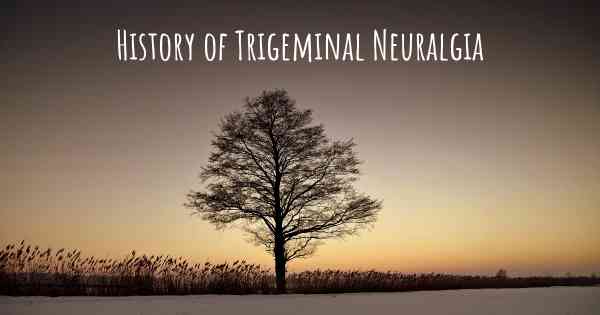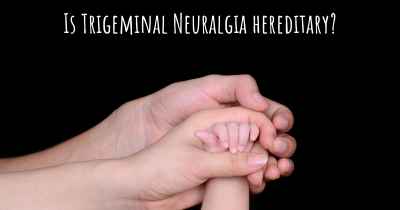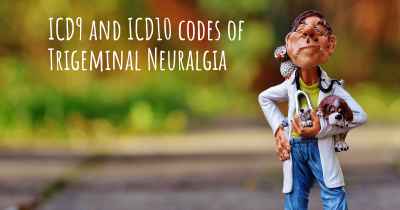What is the history of Trigeminal Neuralgia?
When was Trigeminal Neuralgia discovered? What is the story of this discovery? Was it coincidence or not?

Trigeminal Neuralgia is a debilitating condition characterized by severe facial pain. Its history dates back centuries, with early descriptions of the disorder found in ancient medical texts.
The first recorded mention of Trigeminal Neuralgia can be traced back to the ancient Egyptians. The Edwin Smith Papyrus, an ancient Egyptian medical text dating back to 1700 BCE, describes a condition called "suheb," which is believed to be Trigeminal Neuralgia. The papyrus describes facial pain that is triggered by touch or movement.
Throughout history, Trigeminal Neuralgia has been referred to by various names. In the 17th century, English physician Thomas Willis coined the term "tic douloureux" to describe the condition. The term "tic" refers to the involuntary muscle contractions often associated with Trigeminal Neuralgia, while "douloureux" means painful in French.
Advancements in understanding Trigeminal Neuralgia came in the 19th century when anatomist Johannes Peter Müller identified the trigeminal nerve as the source of the pain. Müller's work laid the foundation for further research and understanding of the condition.
It wasn't until the 20th century that significant progress was made in the treatment of Trigeminal Neuralgia. In the 1920s, neurosurgeon Walter Dandy proposed that the compression of the trigeminal nerve by blood vessels was the cause of the condition. This theory was later confirmed by Janetta in the 1960s, who successfully treated patients by surgically decompressing the nerve.
Over the years, various treatment options have been explored for Trigeminal Neuralgia. Medications such as anticonvulsants and muscle relaxants have been used to manage the pain. Additionally, procedures like nerve blocks and radiofrequency ablation have been employed to provide relief.
Today, the treatment of Trigeminal Neuralgia has advanced significantly. Microvascular decompression surgery, which involves relieving the pressure on the trigeminal nerve, has become a common and effective treatment option. Other surgical procedures, such as radiofrequency thermocoagulation and gamma knife radiosurgery, have also shown promising results.
Research into Trigeminal Neuralgia continues to uncover new insights into the condition. The development of new medications and non-invasive treatment options offers hope for improved management of the disorder.
Trigeminal Neuralgia has a long and storied history, with ancient descriptions and medical advancements shaping our understanding and treatment of the condition. While it remains a challenging disorder, ongoing research and advancements in medical technology provide hope for a better future for those affected by Trigeminal Neuralgia.
Trigeminal Neuralgia as a Clinical Entity. Trigeminal neuralgia, also known as tic douloureux or Fothergill disease, is a clinical syndrome distinguished by brief paroxysms of unilateral, lancinating facial pain that is characteristically triggered by cutaneous stimuli, such as a breeze on the face, chewing, talking, or brushing the teeth.[3,4,38] Many of those who are affected experience multiple attacks daily, and, although they are free of pain between attacks, they live in constant fear of recurrences.[38] The mysterious nature of this disease confused the early development of treatment, because the origin remained elusive. Nevertheless, a review of the history of TN indicates that innovative observations made by discerning clinicians resulted in methods that were at least partially successful in alleviating the pain of this disease, despite the limited understanding of its exact pathogenesis.
Aretaeus of Cappodocia provided one of the earliest descriptions of migraine headache in the second century, and his description has also been credited as the first account of TN.[50,51,59] As Stookey and Ransohoff[59] relate, in his chapter "Cephalaea," Aretaeus made no clear distinction between symptoms that represented a migraine headache and those that represented TN. Approximately 900 years later (AD 1037), as recounted by Ameli,[1] Avicenna described two facial syndromes; one was characterized by "a disease in which the face is pulled unnaturally, its normal shape is distorted and the natural ability of both lips meeting is inhibited." This clearly was a description of facial palsy, but the second case included pain that had a throbbing, tearing, and stabbing nature, characteristics consistent with TN.
The first clear description of TN that was not confused with another disease entity was made in 1688 by Drs. Johannes Michael Fehr and Elias Schmidt, secretaries of the Imperial Leopoldian Academy of Natural Sciences.[59] In their eulogy of Johannes Laurentius Bausch, they vividly described the painful symptoms that had plagued the distinguished founder of their Academy for the 4 years prior to his death. Bausch was said to have experienced a sharp, shooting pain in his right maxilla that came on suddenly like a bolt of lightening, varying in intensity, leaving him unable to speak or eat solid food.[59] In the fall of 1665, the pain disappeared, only to return early that same winter. The pain that Bausch subsequently experienced was so intense that it forced him to remain bedridden. He eventually died of malnutrition because his dietary intake was limited by the excruciating pain.[19]
John Locke, a physician and well-known philosopher, provided the first full description of TN by a medical practitioner, along with an account of its treatment. In 1677, while in Paris, Locke was called in to evaluate the wife of the English ambassador, the Countess of Northumberland, who was suffering from excruciating pain in the face and lower jaw.[37,52] Locke deliberated whether to prescribe "opening medicine" (laxative therapy), because of the wintry weather at the time. In spite of the cold and the inconvenience he would cause his patient, he eventually overcame his reluctance and thoroughly purged the Countess. Her pain improved several weeks later.[59]
Nearly a century after that, two prominent clinical accounts were reported, one by Nicolas André (Fig. 1A) and one by John Fothergill (Fig. 1B) that further characterized this disease entity. In 1756, André reported two cases of TN, which he termed tic douloureux.[2,14,52] He conceptualized the disease in terms of convulsions, and he believed that true tonic convulsions, tetanus, and spasm clinique belonged in a single disease spectrum. The term tic douloureux was used to imply contortions and grimaces accompanied by violent and unbearable pain. André believed that the cause was "vicious nervous liquids" that distressed the nerve and caused painful shocks. Using this reasoning, he followed the proposal of Maréchal (a contemporary surgeon) by applying caustic substances to the infraorbital nerve at the infraorbital foramen over a period of days until the nerve was destroyed.[43,59]
In 1773, John Fothergill, an English physician, presented 14 cases of a painful affliction of the face.[20] His description of TN has been considered an accurate and clear account.[59] In Fothergill's description he made the following comments:
The affection seems to be peculiar to persons advancing in years, and to women more than to men.... The pain comes suddenly and is excruciating; it lasts but a short time, perhaps a quarter or half a minute, and then goes off; it returns at irregular intervals, sometimes in half an hour, sometimes there are two or three repetitions in a few minutes.... Eating will bring it on some persons. Talking, or the least motion of the muscles of the face affects others; the gentlest touch of a hand or a handkerchief will sometimes bring on the pain, whilst a strong pressure on the part has no effect. [20]
Fothergill asserted that TN was not within the spectrum of a convulsive disorder. Instead, he postulated that this disease might be the manifestation of some type of cancer; he found a hard tumor of the breast in two of the 14 cases he presented. Given his meticulous description of the clinical symptoms, many thereafter referred to this condition as "Fothergill's disease." [43,59]
Thus, although a clear description of this distinctive condition had been made by the end of the 18th century, it was not until the 1820s, when Charles Bell established the separate functions of the trigeminal and facial nerves, that tic douloureux and Fothergill disease would be truly differentiated from other conditions.[67] Bell's contribution enabled tic douloureux to be localized to the trigeminal nerve, which ultimately led to the evolution of the name of the disease to trigeminal neuralgia.
Source: http://www.medscape.com/viewarticle/505379
Posted Jun 12, 2017 by Margo 3125
Posted Jul 30, 2017 by Poison Yvy 2015
Posted Aug 6, 2017 by Michelle 2050
Posted Feb 4, 2018 by James 2500
In the south aisle of Wells cathedral lies the tomb of Bishop Button, who died in 1274. He was canonised. Many pilgrims and toothache sufferers left offerings at the tomb, in commemoration of which the capitals of the pillars bear carvings of people depicted with facial neuralgia. One is famed as the toothache figure. Because of the surprising rarity of dental caries in that time (confirmed when the sarcophagus was opened in 1848), Wilfred Harris pointed out the probable relevance to trigeminal neuralgia.
Posted Feb 23, 2018 by Alicia 2600
Awareness of Trigeminal Neuralgia has existed for a considerably long time in terms of recorded history. The second century CE Greek physician, Aretaeus of Cappadocia, described the first inklings of Trigeminal Neuralgia symptomatology in his extant works. His descriptions of right-sided pain—or "left solely"—culminates in what he called heterocrania, a form of disease of the head known to him as cephalaea. Though valuable in increasing our knowledge of the history of medicine, it has been argued that what Aretæus describes as cranial pain could just as easily refer to migraines as to classic trigeminal neuralgia. Next on our brief medical tour is the philosopher-scientist Avicenna (980–1037 ce), who articulated symptoms of throbbing, tearing, stabbing pains that are common in contemporary descriptions of classic trigeminal neuralgia. The eighteenth-century philosopher and physician John Locke—yes, he of the famous Essay Concerning Human Understanding—treated a case of trigeminal neuralgia suffered by the Countess of Northumberland during his time in Paris.
About a century later, two medical practitioners, John Fothergill and Nicholas André, reported separate accounts of this rare disease. André dubbed the disease, tic douloureux, a painful tic or spasm. The name is still used today. It became known as Fothergill’s disease in the English-speaking world. It wasn’t until the Scot anatomist and surgeon, Charles Bell, established the differentiations of the functions of the trigeminal nerve in the mid-nineteenth century that the disease’s name evolved into a disorder that is officially called trigeminal neuralgia.
Posted Feb 13, 2020 by Eric 2550








